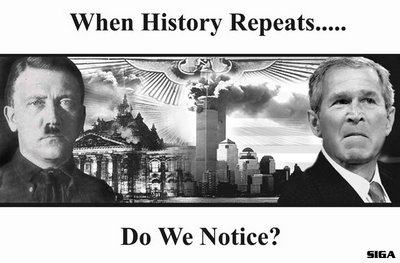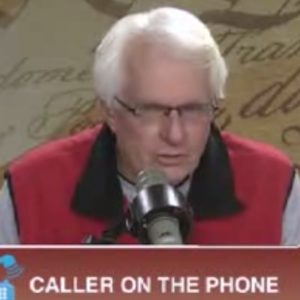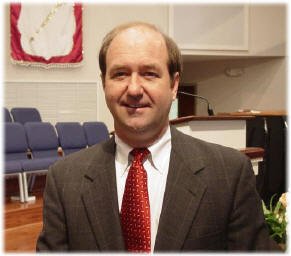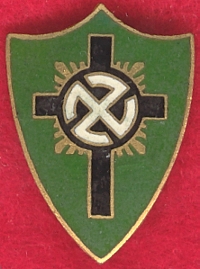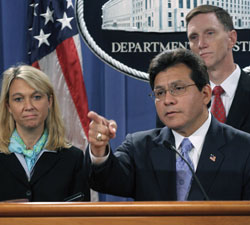Alex Constantine - July 31, 2014
Mississippi Burning Killings: Religious Terrorism?
By Stuart Wexler
Samuel Holloway Bowers, the first Imperial Wizard of the White Knights of the Ku Klux Klan of Mississippi and the mastermind behind the slayings of three civil rights workers in Neshoba County, Mississippi, 50 years ago, did not fit the caricature of a backwards racist. College educated as an engineer at the University of Southern California and at Tulane University, associates described him as an ideologically driven strategist.
"He is very intelligent. I have no question about that," Thomas Tarrants, once the self-described chief terrorist for Bowers, told journalist Patsy Sims for her book The Klan. "And I believe he was like I was, indoctrinated, brainwashed ... Absorbed into an ideology that took on the awe of a holy cause and blinded his mind to everything else. I think Sam believes what he is doing is right and has the sanction of God."
Tarrants later renounced racism and is currently an ordained, evangelical minister. But at one time he saw himself as occupying the same unique space as Bowers in the counter-revolution against integration and desegregation: that of a holy warrior. As Bowers described it, in 1994, to theologian Charles Marsh:
"There are two really powerful figures in the world: the priest and the preacher. I think I came here as a priest, though not a preacher. A priest is interested in visible, public power relations; this is what makes him powerful as a warrior. A preacher is an evangelist; he will tell people what to do. But the priest will arrange the means and operations to implement this into concrete action. When the priest sees the heretic, he can do only one thing: he eliminates him."
Scholars, if they pay any attention to it at all, have been confused by Bowers' open professions that religion drove his activities. Religion, to many historians, was simply a cover for white supremacists of all stripes to retroactively justify their racial animus — epitomized by the ritual burning of the cross. Even as a rare exception to this mindset among scholars, Marsh still viewed Bowers through the prism of mainstream Christianity, where religion is one motivating force behind Bowers activities, but where Bowers used creative interpretations and rationalizations of the Bible to justify his actions. Anyone who accepts communism — which for Bowers included almost anyone in or who supported the civil rights movement — had embraced a Godless ideology and relinquished God's grace. In this rendering, Bowers is still a reactionary, vigilante racist, but one who attempts to sincerely reconcile his actions with his conventional, Christian faith.
But new research suggests religion not only drove Bowers' violent activities, but that it influenced his tactics, in ways that were opaque not simply to outside observers, but even to rank-and-file members within the White Knights, the group Bowers led from 1964 through 1968. Bowers made a point of hiding his true motivations, according to Delmar Dennis, a high-ranking White Knight who became the FBI's most important informant on the group. "The typical Mississippi redneck doesn't have sense enough to know what he is doing," Dennis described Bowers as saying to him privately, "I have to use him for my own cause and direct his every action to fit my plan."
The historical record now makes it clear Bowers' plan involved a goal for a holy race war, one the Klan leader hoped to provoke himself. Marsh, and other experts on Bowers, recognize that as of 1967, Bowers had embraced a radical interpretation of Christianity — referred to as Christian Identity theology or the Christian Identity Movement — that devalued minorities as sub-human, and that saw Jews as Satanic conspirators against Anglo-Saxon whites. What many have failed to see was that, in the hands of a militant like Bowers, this theology became the driving force behind his strategy and tactics, as surely as the goal of creating a transnational, Islamic caliphate drove Osama Bin Laden. Unlike Bin Laden, Bowers had to hide this ideology from most of his conventionally Christian Klan members, and "use" them to "fit" his plan. Moreover, the record indicates Bowers likely embraced this theology early in his tenure as the head of White Knights, possibly before he became its leader. Evidence suggests Bowers possibly planned the "Mississippi Burning" killings with this religious worldview as his guide. Viewed through the lens of religious terrorism, the killings of Mickey Schwerner, Andrew Goodman, and James Chaney, become even more dark and twisted than they appeared at the time. Bowers plans appear to be more ominous than simply trying to thwart the Freedom Summer set to begin shortly after the three civil rights activists disappeared.
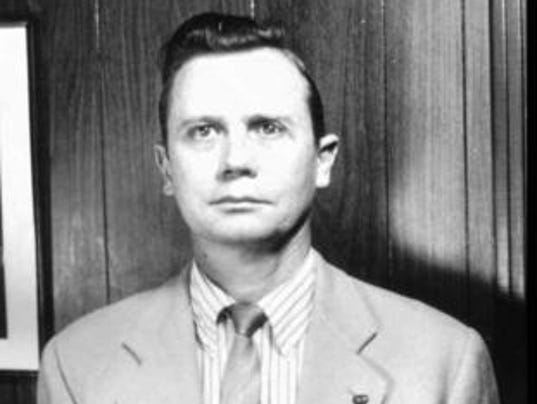 Samuel Holloway Bowers (Photo: FBI)
Samuel Holloway Bowers (Photo: FBI)
That Sam Bowers was a devoutly religious Christian for the duration of his tenure as the leader of the White Knights is without question. In his excellent book, God's Long Summer, Marsh traces Bowers' interest in religion to his military experience during World War II, one that was bolstered in 1955 after Bowers experienced a moment of mystical intensity" when "God spoke to him." As the leader of the White Knights, which formed circa 1963-1964, Bowers always carried a Bible, always began every meeting with a prayer, and, even as he commanded a group the FBI believed to be the most violent Klan organization in the nation, always insisted "a Solemn, determined Spirit of Christian Reverence must be stimulated in all members" of the White Knights.
But what seems like a fundamental contradiction to anyone familiar with the nonviolent teachings of Jesus Christ in the New Testament was, to Bowers, something consistent with the worldview of a rapidly growing and militant Christian sect: the Christian Identity Movement. It now appears possible this radical offshoot of Christianity may have gained purchase with Bowers by 1964, the year he took command of the newly formed White Knights, and may well have played a key role in motivating and shaping the contours of the Mississippi Burning killings.
When at its peak of influence from the late 1940s through the 1960s, the heart of the Christian Identity Movement was, geographically, in Southern California. But it had originally begun in the 19th century in Victorian England, and was called British Israelism. At its core, the Christian Identity Movement argued Anglo-Saxons, and not Semitic Jews, were the true chosen people of the Bible. The idea gained currency in the United States at the turn of the 20th century. The timing of its spread from the eastern to western United States in the 1920s and 1930s pushed the movement in a notably racist and anti-Semitic direction. In the 1920s, the Ku Klux Klan was perhaps the largest fraternal organization in the United States, with a national reach and membership in the millions, in part because of xenophobia and anti-immigrant sentiment that extended, in no small part, to the recent wave of Jewish immigrants. One of the most vocal, early supporters of the Christian Identity Movement was W.J. Cameron, a media figure who worked closely with Henry Ford on his nationally syndicated Dearborn Independent, and who used the publication to spread virulently anti-Semitic ideas.
Hence by World War II, some in the American Christian Identity Movement embraced a darker version of its Anglo-centric theology. Anglo-Saxons were not simply God's chosen people in this version: Jews were literally Satan's spawn. Under a new interpretation of the Book of Genesis, shaped primarily by the Rev. Gerald Smith, Anglo-Saxons were the offspring of Adam and Eve, through the bloodline of Seth; contemporary Jews, on the other hand, were the offspring of Eve and the Serpent (e.g. Satan) through the bloodline of Cain. The popular perception that Jews were the Chosen People, and that Jesus Christ was Jewish, was a lie of cosmic proportions, part of a literal, Satanic conspiracy to subvert God's will. Known as the "two-seed theory" this new interpretation of the creation story became the foundation of a militant variation of Christian Identity theology, one that also held other nonwhites — Africans and Asians — descended from the "beasts of the field," the animals who roamed the world before Adam and Eve. These other groups, referred to as "humanoids" or "mud people" by those in two-seed Christian Identity theology, were manipulated by Jews in the service of Satan.
The alternate interpretation of humanity's beginning also implied an alternate interpretation of the final days of humanity's judgment by God, what conventional Christians refer to as "The End Times." Like many millennial Christians in modern America, Christian Identity adherents believe the second coming of Jesus Christ will be marked by a period of tribulation — plagues and other calamities — and ultimately a spiritual war between the forces of Satan, led by the anti-Christ, and the forces of God; God will triumph, and Jesus Christ will return for his 1,000 year reign in the Kingdom of God. But in the radical version of Christian Identity theology, this end-times conflict will be a holy race war where Anglo-Saxon whites do battle against Jews and the "mud people." The outcome will be a racially pure world or a racially pure America. Unlike the end-times view popular in fundamentalist, evangelical circles, those who adhere to this more militant version of Christian Identity do not believe in a rapture — a time, before the tribulation, when God will spare believers of his plagues by removing them from the secular world. Instead, most radical Christian Identity believers argue God's "elect" must take an active part in bringing about and participating in this spiritual war, serving as soldiers for God. For this reason, they frequently stockpile weapons and food in preparation for the End Times. More relevant to the discussion of Bowers and the Mississippi Burning murders, they also are willing to engage in provocative acts of violence in hopes of hastening the End Times.
 Wesley Swift's Christian Identity sermons were popular among Klansmen in Mississippi.(Photo: Wesley Swift website)
Wesley Swift's Christian Identity sermons were popular among Klansmen in Mississippi.(Photo: Wesley Swift website)If Gerald Smith was most responsible for developing the ideas for this racist version of Christianity, then his pupil, the Rev. Wesley Albert Swift was most responsible for its growing popularity in the 1950s and 1960s. Swift refined Smith's theological ideas, but most importantly, spread them, through the power of his oratory and the magic of communications technology, to a much wider audience. A Klan member, Swift's home of Lancaster, California, where he founded the Christian Identity congregation known as the Church of Jesus Christ Christian, became the epicenter for radical Christian Identity theology. Radio broadcasts of his sermons reached thousands. A network of radical racists created a tape distribution network for those who could not listen to Swift's teachings directly. In Mississippi, by the mid-to-late 1960s, those on Swift's mailing list were playing them to others at "listening parties" in places like Jackson. By 1965, a mailing list for Swift's taped sermons included almost 100 people across North America and in Europe. They included the names of leaders of some of the most violent reactionary groups in America, concentrated in groups like the National States' Rights Party. Formed in 1958 by J.B. Stoner and Edward Fields, both formerly of the Christian Anti-Jewish Party, almost every senior member of the National States' Rights Party was on Swift's mailing list or an actual minister in Swift's Church of Jesus Christ Christian.
The National States' Rights Party provides an interesting prism with which to view the differences between conventional Klan groups fueled mostly by reactionary desire to protect the "Southern Way of Life," and the less-well known groups that had a religious motivation and worldview. As such, it becomes a frame-of-reference from which to evaluate Sam Bowers' actions in planning the Mississippi Burning murders 50 years before.
Scholars of terrorism often group terrorists into two groups: nationalist-secular terrorists, who have a limited set of practical, political goals, and ideological terrorists (including religious terrorists), who have a more pro-active, far ranging agenda to radically re-shape the world order. Rarely do racist groups fall under the latter category, but the National States' Rights Party clearly did. This is obvious from two facts: the willingness of the National States' Rights Party to engage in actual acts of violence against Jews and Jewish targets, and their willingness to plan violence as provocations rather than responses to the civil rights movement. In the case of anti-Jewish violence, Stoner, who once argued that Adolf Hitler did not go far enough in killing Jews, was widely believed to have masterminded a national wave of bombings against Jewish targets in the South — synagogues — in the late 1950s. Notably, the actual bombers in the 1958 attack on the Hebrew Benevolent Congregation Temple in Atlanta, fingered Stoner as the chief plotter, only to recant their testimony once KKK leader James Venable — a friend of Stoner who shared an Atlanta law office with the National States' Rights Party co-founder — became their attorney. The attacks on these temples made little sense as a reaction to the civil rights movement. Southern Jews had more or less acclimated themselves to the system of white supremacy in the South, "keeping their heads below" the water so to speak, for fear they, too, would be subject to the same kind of violence visited upon Southern blacks. Whereas Northern Jews (including Schwerner and Goodman) became important cogs in the civil rights movement, Southern Jews, in the words of scholar Melissa Fay Greene — author of a book on the Atlanta temple bombing — only "occasionally, and from a distance, lent moral support but were little involved in the civil rights struggle." Stoner's extreme positions favoring anti-Jewish violence were seen as unnecessary by even die-hard segregationists, and resulted in his being forced out of KKK groups in Tennessee.
The same ideology pushed the National States' Rights Party to extremes on racial violence as well, but not without a purpose. A case in point is a planned attempt to the assassinate Martin Luther King, Jr. in the wake of the bombing of the 16th Street Baptist Church in Birmingham on Sept. 15, 1963. That the bombing already killed four young girls was already regarded, by the Klan in Alabama, as a major mistake— one that likely was not planned, but that resulted from a problem with the detonation of the explosive devices. For those who sponsored the bombing, the regret had less to do with the horrific nature of the act than with the public relations nightmare it caused, both within and outside Alabama, including the second major race riot in the history of Birmingham. The first such riot occurred the previous May in response to the simultaneous bombing of Martin Luther King Jr.'s room at the A.G. Gaston motel in downtown Birmingham, and of the home of King's brother, A.D. Yet FBI records show several leading National States' Rights Party members planned to assassinate Martin Luther King when he came to eulogize the four young bombing victims— an action that would almost certainly have provoked even greater civil disorder and federal intervention. This kind of extremism was one reason why even the arch-segregationist Bull Connor, Birmingham's commissioner of public safety, resented the National States' Rights Party. But this level of extremism had a purpose that apparently went beyond simply deterring the civil rights movement.
Tarrants, of Mobile, Alabama, a high school dropout in 1963 who became an ardent member of the National States' Rights Party, and later the chief terrorist for Sam Bowers, would describe this purpose years later:
Part of the strategy was to create fear in the black community — but it was more important to produce racial polarization and eventual retaliation. This retaliation would then swell the ranks of whites who would be willing to condone or employ violence as a viable response to the racial problem.
Several of the individuals who plotted the attempt on King were mentors to Tarrants, and all were followers of, and some were even ministers for, Wesley Swift and his Church of Jesus Christ Christian. Recalling his associates, Tarrants would say of his time with them, "our hope and dream was that a race war would come."
According to FBI informant Delmar Dennis, Bowers privately echoed this same line of thinking to him, saying "he was trying to create a race war" by "engendering hatred among whites in the same manner as it was being fomented by leftist radicals among blacks."
Unfortunately, Dennis is not clear on the timing of this revelation, although the context suggests it was in 1964. That Bowers shared the same vision as Tarrants and his Christian Identity mentors may not be an accident. Bowers could have been influenced by the same kind of ideology at roughly the same, impressionable age as when Tarrants became enthralled by Swift. Sixteen years before Tarrants dropped out of high school to become a true believer in the white supremacist cause, Bowers was an engineering student at the University of Southern California. There is no direct evidence, either way, that Bowers was exposed to Swift's message at a time when Swift was beginning his ministry. But Marsh describes Bowers returning home in the late 1940s and studying religion alongside Nazi ideology after his stay in California.
What is without question is that within 20 years, Bowers was undoubtedly under the sway of Wesley Swift and the Christian Identity Movement, as were many in Mississippi. When Bowers set-up a covert hit team in 1967, one led by Tarrants, FBI documents show White Knights leaders referred to it as "the Swift Underground." According to investigative reporter Jerry Mitchell, Tarrants and Bowers enthusiastically discussed Swift's latest sermons even as they planned their wave of violence in the fall of 1967. But more than anything, it was the target of Bowers' outrage in 1967 that pointed to the influence of Swift — Jewish leaders and synagogues. Bowers continued to attack black targets — something that was also consistent with Christian Identity theology — but expanded his violence to include Jewish institutions at a rate not seen since Stoner's late, 1950s wave of temple bombings. Again, this made little sense outside of religious impulse. While Rabbi Perry Nussbaum, a target of one of the attacks, was a rare, outspoken supporter of civil rights within the South, he had done so for several years prior to the attack. Why not target Nussbaum before the civil rights movement delivered on its promise of anti-discrimination protections and voting rights in 1964 and 1965?
As it turns out, Bowers may well have wanted this kind of action in 1964. FBI documents show Bowers attempting to convince the White Knights to move in anti-Jewish direction as early as 1965. According to informants, Bowers tells the group there are two of kinds of KKK groups, those that target "n-----s" and those that target Jews. He hoped the White Knights would focus on the latter, as Jews, in Bowers estimation, were the root source of the racial problems in the South. But Bowers could not convince his rank-and-file members to target Jews. To the average racist, blacks, outside agitators, and the federal government were the obvious threat to white supremacy, not Southern Jews, who, again, were largely silent in the face of Jim Crow. It was only after the success of the Civil Rights Act of 1964, and the Voting Rights Act of 1965, had diminished his membership to a few hundred hard-core followers that Bowers could redirect his efforts against Jews, and then, only with a closely-controlled group of Swift followers who, like Tarrants, shared Bowers' anti-Semitic sensibilities.
For Bowers to target Jews in 1964, however, he had to align his Christian Identity worldview within the general framework of violent resistance to integration in general. Modern scholars even have a name for this kind of combination of secular-nationalist and ideological terrorism: hybrid terrorism. The evidence suggests the killings of Schwerner, Goodman and Chaney may have been an act of hybrid terrorism, representing an act of reactionary, vigilante violence for the actual perpetrators, those who wanted to stop Freedom Summer before it started, but representing a pro-active, religious terrorism for Sam Bowers, the man who plotted the crime, in hopes of stoking a racial holy war. The vigilantes likely never knew what motivated the mastermind.
********************
There are three lines of evidence that suggest that, while the actual perpetrators of the awful crimes of June 21, 1964, were not religious terrorists, the attack itself was shaped by Sam Bowers' religious worldview (likely without the actual perpetrators' knowledge). Bowers' rhetoric before the crime, his plan to hide and bury the bodies before the crime, and his post-crime rhetoric all point to the influence of Christian Identity theology on the Mississippi Burning killings.
Bowers rhetoric on June 7, 1964, two weeks prior to the killing of the three activists, foreshadowed to his followers — most of whom had no idea the Mississippi Burning attack was "in the works" — that a ground-breaking event would transpire in near future. Bowers' certainty there would be violence and federal intervention within days of the speech, suggests the possibility he had the killings on his mind when he spoke to the rank and file. Many experts believe planning for the crime had begun as early as May, after Mickey Schwerner began his work in Meridian on behalf of the Congress for Racial Equality. Two elements of this speech are worth highlighting and point to the likelihood Bowers saw the Mississippi Burning killings as a potential entree point to the kind of cycle of violence Swift followers, like Tarrants, believed would escalate into an end-times race war.
First, in the speech, Bowers actually references the cycle of violence described by Tarrants, where the races are polarized to the point of an actual race war. After beginning with a prayer, Bowers tells his audience "this summer ... the enemy will launch his final push for victory here in Mississippi." Bowers then speaks in military terms, saying the enemy will have "two basic salients" the first would be massive street demonstrations and agitation by blacks in many areas at once, designed to provoke "black militants into counterdemonstration and open, pitched street battles" that would then lead to a "... decree from the communist authorities in charge of the national government ... declaring martial law." Bowers then outlines the White Knights' plan-of-response — a combination of outwardly "legal" resistance alongside local authorities, but with a "secondary group" who use guerilla tactics as part of a "swift and extremely violent hit-and-run" strategy. To the rank-and-file to whom he was speaking, Bowers presented this as an unfortunate but necessary (and imminent) future; but again, he was addressing people who never confronted anything like Christian Identity theology at their churches on Sundays. More to the point, Bowers would surely know federal intervention of any kind in the South, especially in Mississippi, was bound to be offensive to his audience. These were many of the same people who violently attacked National Guardsmen sent by President John F. Kennedy to protect James Meredith, when the latter integrated the University of Mississippi in 1962. To openly welcome such intervention would be anathema to a group of people schooled in the idea that the Northern military occupation of the South during Reconstruction was a travesty of the first order.
If anything, Bowers' actions after the Mississippi Burning killings only would have courted the federal intervention most of his followers would have abhorred. Bowers escalated the violence in Mississippi— more than 20 bombings occurred during Freedom Summer— at a time when public polls showed the general public favored massive federal intervention in Mississippi if the violence in that state persisted. When he placed a moratorium on violence in response to the growing presence of federal law enforcement, Bowers only stopped bombings in counties subject to intense law enforcement scrutiny. In fact, he specifically asked for violence to increase in outlying counties to divert the FBI's resources. Whether that violence was simply a general reaction to Freedom Summer, or an effort to provoke further federal intervention, or both, is impossible to say from the available evidence.
But one aspect of plotting the Mississippi Burning killings certainly suggests Bowers was creating the very conditions likely to generate federal intervention, and thus per his comments to Delmar Dennis, a racial holy war. This was the decision to bury the three men deep beneath the earthen dam at Old Jolly Farm.
Many scholars believe the decision to use the dam was conceived as far back as May, a level of planning that itself was odd. Certainly, disposing of bodies was not unknown in Klan violence. But it was almost always ad hoc — as is evidenced by the bodies discovered in the Mississippi swamps and marshes during the search for the three missing activists. To make arrangements to carefully bury bodies weeks in advance of a crime is largely unknown in the annals of racial violence. It stands in contrast to the wanton disposal of the activists' vehicle — found burnt out shortly after the men were reported missing. This incongruity — disposing of the bodies but not the car — makes little sense in terms of tactics, and the juxtaposition has baffled scholars. But it makes perfect sense if the goal of the crime was, in Bowers' mind, to invite greater and greater federal intervention in Mississippi, in hopes of escalating violence. Allowing the vehicle to be discovered, but carefully hiding the bodies, would all but guarantee that federal law enforcement would spend days, if not weeks, searching through Mississippi to find the three men. This is exactly what happened. And recall that during the same time that there was an ever expanding federal intervention to find the men, when the media attention was at its peak, the White Knights only expanded their reign of terror, antagonizing not just law enforcement, but the good will of the entire nation. Other evidence, explored in my co-authored book The Awful Grace of God, raises the possibility that Bowers hoped the Mississippi Burning killings would coincide with, and possibly help bring about, the assassination of Martin Luther King, Jr. (if he came to protest the crime). It is too speculative to explore here, but such a follow-up killing, if successful, would certainly have triggered massive rioting, possibly national in scope, and was consistent with the documented (and failed) attempt on King's life by Swift followers in 1963, after the bombing of the 16th Street Baptist Church.
But the most convincing evidence Christian Identity theology was motivating Bowers in planning the Mississippi Burning killings comes in his rhetoric immediately after the bodies were found. Many scholars have pointed to the comment by Bowers, shortly after the crime, that the attack on the three civil rights workers was the "... the first time that Christians had planned and carried out the execution of a Jew." This is in keeping with the prevailing view of the crime, that its chief target was Schwerner, who had worked in the Klan stronghold of for weeks before Freedom Summer. The more telling rhetoric, however, comes from the earliest pieces of propaganda produced by the White Knights in the wake of Freedom Summer. In the fall of 1964, several weeks after law enforcement found the bodies of the three men in an earthen dam at Olen Burrage's property, Bowers produced another edition of the Klan Ledger. "The 'long, hot summer' has passed," the periodical read. Referring to the civil rights activists who worked to register black voters, among other things, Bowers claimed they had "no laurels to their credit, and the general public of Mississippi has had a fill of their very existence … For the success of our struggle against this scum, we offer our thanks to Almighty God, our Creator and Savior." What followed was an extended rant, theological and political, directed at civil rights sympathizers, the federal government, but primarily Jews. It is here that the early Christian Identity influence on Bowers is obvious.
The rant begins by referencing two sections of the Book of Revelations. Chapters 2:9-10 and Chapters 3:9. These passages reference the "Synagogue of Satan" and those who "lie" and "say they are Jews." As the late scholar of the Christian Identity Movement Chester Quarles has noted, these specific New Testament passages are foundational texts for two-seedline Christian Identity adherents, who argue modern Jews are "imposters" who serve Satan and the anti-Christ as part of a cosmic conspiracy. If there is any doubt this is the thinking of Bowers, the Klan Ledgercontinues: "Today's so-called Jews persecute Christians, seeking to deceive, claiming Judea as their homeland and they are 'God's Chosen … They 'do Lie', for they are not Judeans, but Are the Synagogue of Satan!" It adds: "If a Jew is not capable of functioning as an individual, and must take part in Conspiracies to exist on this earth, that is his problem." Passages also reference "Jew consulting anti-Christs" and assert that "Satan and the Anti-Christ stalk the land."
Again, anti-Semitism was common to Klan groups in the 1960s. But it was often in the same form as anti-Semitism the world over — the blood libel that claimed Jews were responsible for the death of Jesus Christ. The refusal of Jews, the chosen people of the Old Testament, to accept Christ as their messiah is the other, longstanding grievance leveled against Jews by hostile Gentiles. What distinguishes Christian Identity from other forms of anti-Semitism is the blatant rejection Jews were ever the Chosen People, that they were ever in a position to accept Christ as their savior in the first place. Under two-seed theology, Jews have conspired to convince the world they are the Chosen People, when, in fact, they are the offspring of Satan. Swift, and his followers, frequently referred to Semitic Jews as imposters. That this line of thinking is evident in a periodical so close to the Mississippi Burning killings strongly suggests Bowers had accepted this idea before 1967.
More to the point, that these killings themselves were framed by rhetoric predicting a major racial conflict (on June 7, 1964) and rhetoric (in October 1964) that is integral to Christian Identity theology suggests the strong possibility Bowers had racial Armageddon on his mind when he plotted the Mississippi Burning killings. The care that went into hiding the bodies, and the fact violence persisted even while public opinion shifted in favor of federal intervention, only amplifies this theory. The men who falsely jailed, shadowed, kidnapped and shot Mickey Schwerner, Andrew Goodman and James Chaney in cold blood likely never were exposed to Bowers' religious ideology. But if Bowers hid this motivation from his followers, certainly he had to hide it from the media, and thus obscure it from the scrutiny of future scholars and historians. Even decades later, when he, in rare, candid moments, exposed his religious zeal to those like Marsh, Bowers was doing so at a time when federal and Mississippi authorities were finally targeting older racists for prosecution in decades-old civil rights cold cases. If he was being coy for legal protection, it was for good reason: In 1998, Bowers would finally be convicted for ordering the 1966 murder of NAACP activist Vernon Dahmer. Bowers died in prison in 2006, one year after Edgar Ray Killen became the last person prosecuted for his role in the Mississippi Burning killings. But if the theory described here is true, studying that horrible act of domestic terrorism may have more relevance to our current struggle against foreign terrorism than perhaps we'd like to admit, suggesting we may not only need to re-examine the motives behind some of the most provocative acts of racial terrorism in American history, but challenging the assumption that religious terrorism is exclusively the domain of radical extremists of the Islamic faith.
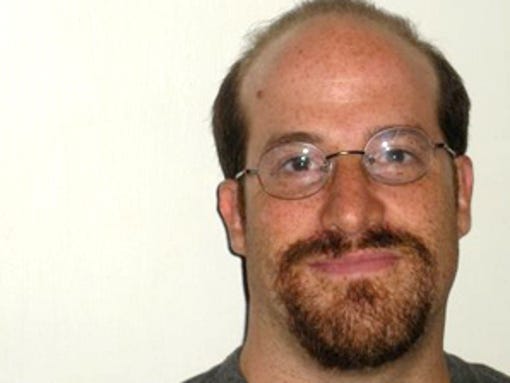
Author Stuart Wexler has written extensively about the KKK and white supremacy.(Photo: Courtesy of Stuart Wexler)
Stuart Wexler is the co-author, with Larry Hancock, of the Awful Grace of God: Religious Terrorism, White Supremacy, and the Unsolved Murder of Martin Luther King, Jr. as well as the e-book, Rebels, Redbaiters and Religious Radicals: New Insights Into the Birmingham Church Bombing and Modern Racial Terrorism. He is starting an Indie Go Go campaign to turn his research into a documentary.
RELATED LINK: Veterans of Freedom Summer gather for 50th
RELATED LINK: Mississippi movement set example for female leaders

